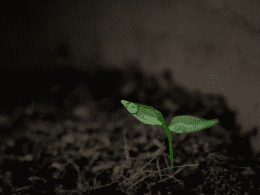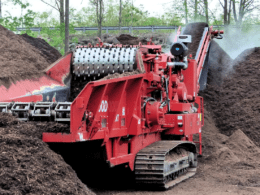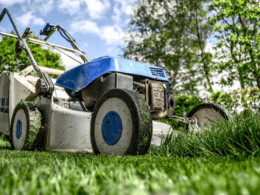Are you tired of constantly having a soggy and muddy yard, leaving you and your family with wet feet and a messy lawn? It’s time to take action and fix your wet yard for good! Don’t let a wet lawn ruin your outdoor fun and curb appeal.
With a few simple tips and tricks, you can create a dry and beautiful lawn that you and your loved ones can enjoy without worrying about slipping or sinking. In this article, we’ll guide you through the process of fixing a wet yard and creating a dry lawn that’s perfect for family gatherings, pets, and outdoor activities.
We’ll explore various solutions, from improving soil quality to planting the right vegetation, to help you achieve a dry and safe lawn. Say goodbye to muddy shoes and hello to a beautiful and dry lawn that adds value to your property.
Let’s get started!
Quick Takeaways
- Building up low areas with dirt and gravel and using a rototiller to level the ground and reseed can help dry up a wet yard.
- Checking for drain and grate clogs frequently, removing landscape features that impede drainage, and using aeration to allow water to drain through compacted topsoil are other useful tips.
- To fix an overall soggy lawn, burying downspouts, regrading the entire yard for proper water flow, spreading sand over areas, and amending underlying soil with peat or compost can be effective.
- Fixing a wet and muddy yard not only adds curb appeal but also allows family and pets to utilize the lawn without mess and avoid tracking mud into the house or gouging ruts into grass.
Solving Drainage Issues
If your yard is always wet and muddy, you can solve drainage issues by taking some simple steps.
Start by checking for clogs in drains and grates frequently. Removing any landscape features that impede drainage can also be helpful.
You can also dig a trench to remove water to a nearby sewer drain or dry area. If the problem is more severe, consider installing a French drain. This is a trench filled with gravel and landscape fabric that redirects water away from the yard.
Regular maintenance is important, so make sure to clean out the drain periodically. French drain installation may sound daunting, but it can be a great solution for a consistently wet yard.
It’s important to remember, however, that regular maintenance is crucial. Neglecting a French drain can lead to clogs and other problems that could make the issue worse.
If you’re not up for the task, consider hiring a professional to help you maintain the drain and keep your yard dry.
Improving Soil Quality
To improve the quality of your soil, you can add peat or compost to firm up soft ground and mix in fine gravel to increase firmness in soft areas. These amending techniques can help with moisture management, as soil heavy with organic matter tends to retain water and contribute to a wet yard.
Here is a table to help you understand the different types of soil and their water-holding capacities:
| Soil Type | Description | Water-Holding Capacity |
|---|---|---|
| Sandy | Coarse and gritty texture | Low |
| Loamy | Mixture of sand, silt, and clay | Moderate |
| Clay | Fine particles that stick together | High |
By understanding your soil type and using the appropriate amending techniques, you can improve water drainage and reduce the risk of a wet yard. Adding sand and fine gravel can also help with soil aeration, allowing water to drain through compacted topsoil.
Planting Solutions
Planting water-loving species is an excellent solution to turn a wet and muddy yard into a beautiful and lush landscape. You can create a planting bed or berm using plants that can thrive in wet soil conditions. Here are four water-loving species that you can consider for your garden design:
-
Cattails: These tall, reed-like plants can grow in standing water and help absorb excess moisture. They also provide a natural habitat for birds and wildlife.
-
Swamp milkweed: This plant loves moist soil and can attract butterflies and other pollinators to your garden.
-
Siberian iris: This perennial plant has beautiful flowers and can grow in wet soil conditions, making it an ideal choice for a bog garden.
-
Joe-Pye weed: This tall plant has clusters of pink flowers and can grow in wet soil conditions. It can also attract butterflies and other pollinators to your garden.
In addition to planting water-loving species, you can also consider incorporating irrigation techniques to keep your yard from becoming too wet. Installing a rain garden or using a French drain system can help divert water away from your yard, while a drip irrigation system can help you maintain the ideal moisture level for your plants without overwatering.
With the right garden design and irrigation techniques, you can turn your wet yard into a beautiful and functional outdoor space.
Frequently Asked Questions
How often should I check for drain and grate clogs?
To prevent water buildup, perform regular maintenance on your drains and grates. Check for clogs frequently to ensure proper drainage. If you need professional assistance, don’t hesitate to call for help.
Can I use a DIY method to create a French drain?
Yes, you can create a DIY French Drain for your yard’s drainage solutions. It involves digging a trench, lining it with landscape fabric, adding gravel, and covering with soil. It’s a simple and effective solution for a soggy lawn.
Are there any types of plants that should be avoided in a water-loving species planting bed?
When planting in a water-loving species bed, avoid plants that require well-drained soil. Choosing appropriate plants can prevent water buildup and promote healthy growth. Regular drainage system maintenance also helps maintain a dry yard.
How long should I wait before walking on a lawn that has been spread with sand?
After spreading sand on your lawn, you should wait at least a day before walking on it. Sand absorption takes time and walking on it too soon can damage the grass. Always prioritize proper lawn maintenance to avoid unwanted problems.
Are there any alternative solutions to burying downspouts to prevent a soggy lawn?
To prevent a soggy lawn without burying downspouts, consider using a rain barrel to collect excess water. Grading solutions, such as creating swales or slopes, can also redirect water away from the yard.









